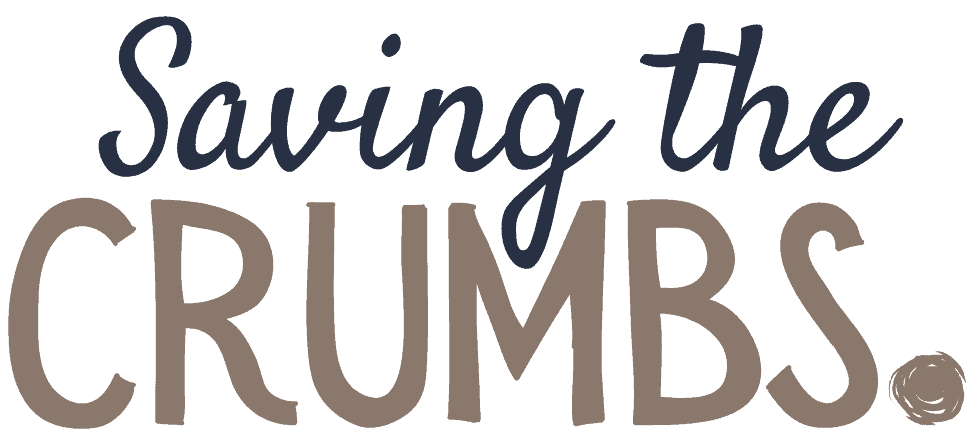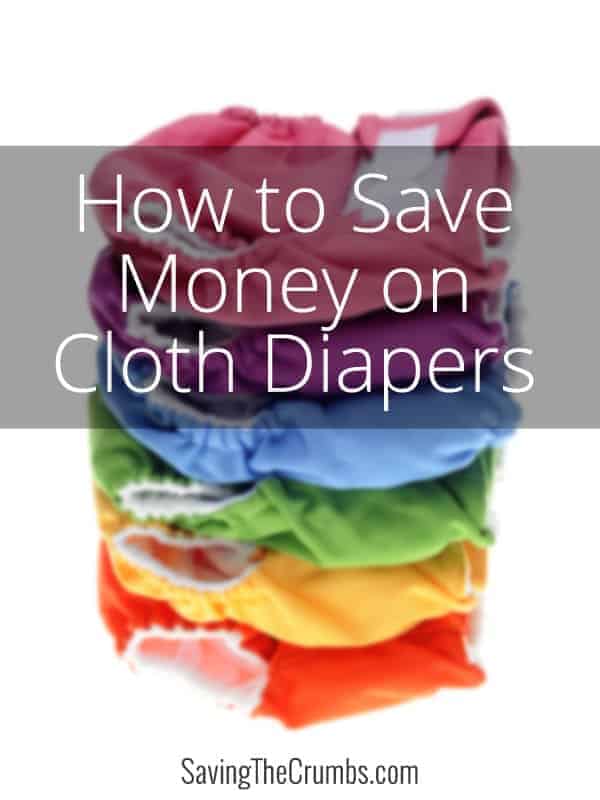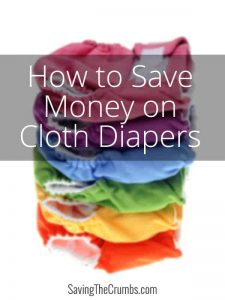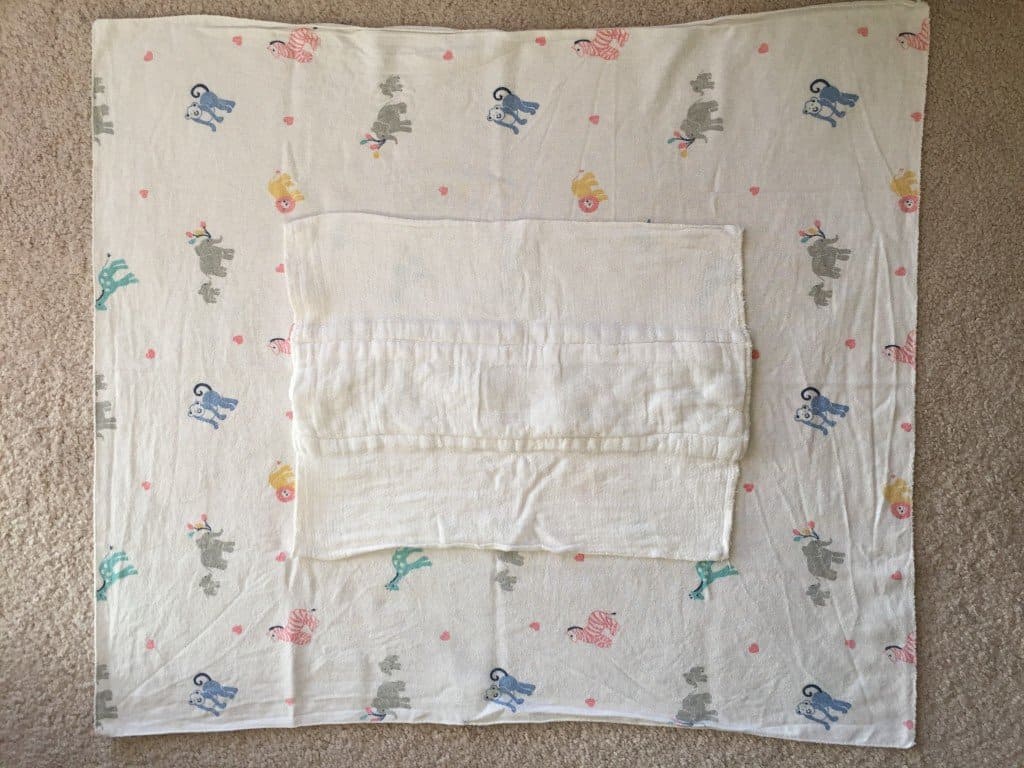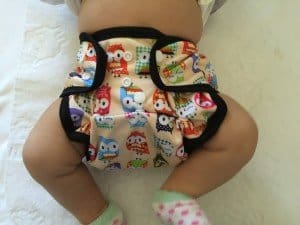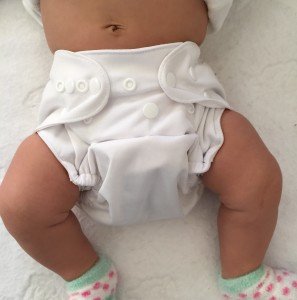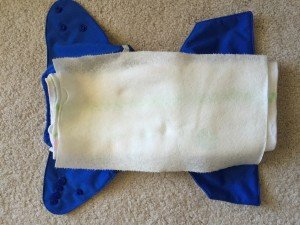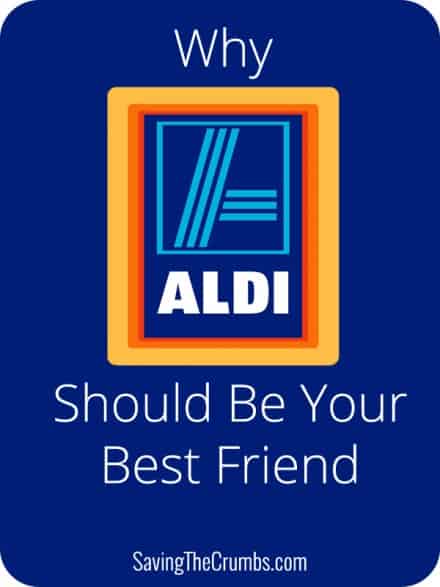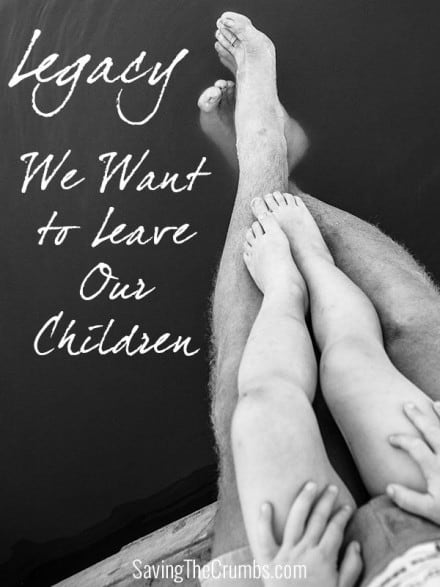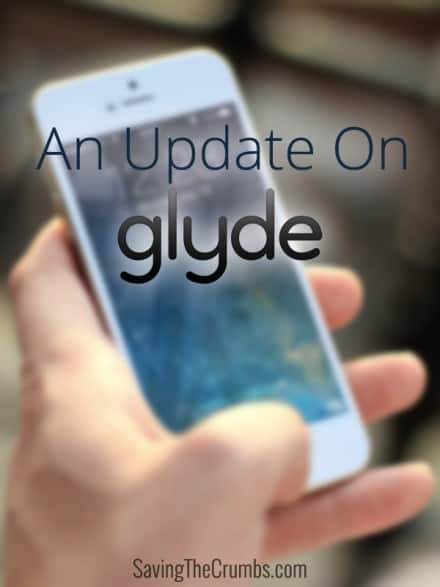Now that little Miss Crumbsaver has joined our family, Al and I are finding that diapers have become a very essential part of our lives. And as Al mentioned in a previous post (What Does A Baby Really Need?), because we weren’t sure if cloth diapers would save us money, we decided to experiment with both cloth diapers and disposables on our first little Crumb. We did disposables exclusively for little Crumb’s first 2 months (with little sleep and the learning curve that comes with new parenthood, it was nice to have the convenience and we also were given quite a few boxes for our baby shower) and then transitioned over to cloth diapers while still doing disposables at nights. So now after 1 month of cloth diapering, we thought we’d share with you what we’ve learned on how to save money on cloth diapering.
(Note: This post is not intended to try to convince anyone for or against cloth diapering but is just our experience and personal opinions.)
Go with Flats
Although there are many different types of cloth diapers out there (pockets, all-in-ones, hybrids, prefolds, flats, etc.), we found it was most cost effective to go with the one with the the simplest construction. Fancy modern cloth diapers come with water-proof covers and linings all built in, stuffable, or snap-in and can easily cost $15-20 each. And because for many of these the absorbent lining is not removeable, the diaper is only good for one use before it has to be chucked into the laundry to be washed. That means even if you do the laundry every few days, to keep up with 7 diaper changes a day you have to have a stock of 20 of these at least! At $15 each that comes to $300 just on the diapers themselves! I could buy 10 months worth of disposables for that much!
However, remember those old photographs of our parents (or us!) running around in white cloth diapers held together with safety pins and covered with those awful plastic underwear? Today, those are called flats and are still fairly common. Why, you wonder, would anyone want to revert back to such an antiquated system when we have much more convenient options today? Here’s why we do:
- Cheaper – The flat cloth itself is only about $2 each new on Amazon, but you can use old receiving blankets or cut a square piece of cloth yourself. We got second-hand receiving blankets for $0.25 each (that’s 60 flats for the price of one $15 modern cloth diaper!).
- Reusable – You do have to purchase the waterproof covers (which can run $4-20). But because the diaper cloth is not connected to the cover, you can just toss the used cloth into the laundry, give the cover a wipe, and use it again (until it gets soiled with poo). So you may need 15-20 of the inexpensive flats, but only 6-7 of the more expensive covers.
- One size – Many of the other cloth diaper styles come in different sizes for different ages. This means you would need to repurchase cloth diapers every time the baby outgrew their current diaper size, which could double or triple your cloth diapering costs! Flats, on the other hand, are one size fit all. You just fold it to size – newborn to toddler. The waterproof covers also come in one size fit all with adjustable snaps. So theoretically, if you go with flats, you would only need to purchase diapers and diaper covers once.
- Fast drying – Not only is a quick dry more convenient for busy, time-crunched moms, but the faster they dry and are available for the next use, the fewer you have to buy.
- Many uses – Most modern style cloth diapers can’t be used for much else. However, an old receiving blanket turned cloth diaper can repurpose into a burp cloth, dish rag, reusable baby wipes, etc.
Of course, the main downfall of flats is that they do need to be folded. Fortunately, it’s not like folding an origami crane! I watched a lot of YouTube videos and experimented with different folds before settling on which worked best for us. It definitely isn’t as quick as putting on a disposable, but most of the folds are pretty simple and it does get much easier and quite fast after a little practice.
What about prefolds?
Prefolds are similar to flats, however the cloth comes “pre-folded” for you with a thicker, more absorbent section sewn into the middle. They are also cut to the right size rectangle to fit around your baby’s bottom which means less folding. However, it also means that prefolds come in different sizes for different bottoms, so you would have to buy size 1 first and then purchase size 2 when she got bigger. They also take longer to dry than flats. So although prefolds are pretty nice (we have some second-hand ones we are using in addition to our flats), all things considered, in my opinion they would still come in second to flats.
Try Cheaper Brands
Al and I try not to be controlled by fashion, and that applies to our little baby’s bottom as well. For example, Flip cloth diapers are a fairly popular brand. They have great features and awesome reviews. However, they cost $15 each. So Al and I decided to try these cheaper options:
Bububibi
We found Bububibi cloth diaper covers on Amazon for $8. We got one (thanks to the person who purchased it for us off our baby registry) and it has worked great!
Alva
Alva cloth diaper covers cost a mere $4 each on eBay! That means you can buy 4 Alva covers for the price of 1 Flip cover! Of course, there are always concessions to buying cheap, and not surprisingly there is some debate on the quality and reliability of Alva diapers (they come straight from China). However, we were willing to take the risk for the 75% savings. Here are our thoughts after 1 month of use:
- Double gussets – Not all diaper covers have double gussets (double elastic around the legs), so this was a nice plus.
- 3 snaps on each side flap – Very secure and gives adjustability to the tightness around her waist and legs (Bububibi has only 2 snaps on each side). With the first Alva cover we ordered the snaps snapped really tight. The second order the snaps didn’t have quite as loud of a “snap” which made me wonder how well they would hold. So far though they’ve worked just as well as the first one.
- Stain removal – We purchased 5 white and 1 blue cover (boring, I know, but solid colors were $0.60 cheaper than patterned and the patterns weren’t very nice anyway). Even when the white cover (and the white elastic material in the gusset) got bright yellow poop stains, I was surprised that they came right out with a little sun exposure. Amazingly after 1 month and many poops they are still shining white!
- Washing – Haven’t noticed any loose seams or snaps or breaking down of the waterproof layer. I wash them in our front load washer in a mesh bag and hang dry them in the sun. We never use the dryer so I don’t know how that would affect them.
- No leaks – Of course this may be different for different children, but so far everything has stayed in. Hooray!
- Material – The material is pretty heavy duty which is good in one sense, but it does make it a bit stiffer than the Bububibi. The Bububibi material seems thinner and is stretchier than the Alva. I like the stretchiness because it provides a bit more give and makes it easier to put the snaps on.
Buy Used
Whether it’s Craigslist, yard sales, thrift stores, or consignment events, you can save a ton of money buying cloth diaper essentials second-hand.
- Craigslist – Lots of people try to get rid of their whole stash of cloth diapers because either their child outgrew them, the child didn’t like them, the parent didn’t like them, or they just have too many. However, keep in mind that just because it happens to be used and discounted doesn’t always mean it’s the best deal. We determined that using old receiving blankets and new Alva covers was preferable and cheaper for us than anything we could find on Craigslist in our area.
- Consignment events – In our area, there are 4 different children consignment events that happen a few times a year. We were able to snag prefolds for less than $0.50 each and receiving blankets for $0.25. Now, that’s hard to beat! Yard sales and thrift stores are great places to look too.
- Sanitize – Don’t forget to thoroughly sanitize anything you purchase used. You don’t want to transmit fungal diseases or anything else that might be left harboring in an old cloth diaper. But before you think it’s too gross or dangerous for your little one, remember that it’s easy to get rid of offending microorganisms. I boil any cloth diaper I purchase used which sanitizes it and also removes any detergent build-up (which can inhibit absorbency).
- Don’t go overboard – Just because it’s cheap, don’t buy more than you need. Cloth diapering is a product of necessity, not merely another excuse to relieve a shopping itch.
Figure Out Your Procedure
If you’re a newbie at cloth diapering like we were, it helps to walk through in your mind each step the cloth diaper will take from clean, to poop, to wash. You may uncover a lot of questions that will help you determine what special procedures are required, what methods will work best for you, and any additional expenses they may necessitate. Here are some of the questions we asked ourselves:
What happens when she poops? How do we get the poop off?
Since a baby’s poop can be pretty runny and doesn’t always plop cleanly off the cloth diaper into the toilet, things can get pretty messy unless you have a plan in place. There are spray nozzles that connect to your toilet, but they’re pretty expensive (and I was afraid I would spray poopy splatters all over the bathroom). You can also buy special buckets and diaper liners. We found that using a strong paper towel (we use Viva) as a liner in the diaper was the cheapest, cleanest, and simplest option for us. We got the paper towels for about $1/roll on Amazon and each roll lasts us almost a month. I use one rectangular tear-off per diaper. If she poops, most of the poop lands in the paper liner and I just lift it off the diaper and discard it. I’ve been surprised at how relatively clean and easy it has been and for the unexpected extra benefit of less staining on the diaper.
Where will we keep dirty diapers?
Even if you do laundry every other day, diapers saturated with urine or tinged with poop can start to smell pretty horrible after even a few hours. A lot of people dump dirty diapers straight into a wet bag, zip it up tight, and hold their nose as they empty the fermenting contents into the laundry a few days later. This also means that you will probably want to wash dirty diapers separate from regular clothes.
I couldn’t bear leaving diapers to saturate, stain, and stink that long. So after every diaper change, I give the diaper cloth a rinse in the tub and then hang it out to dry in the sun. Then, when I do laundry, I toss the now fairly clean but used diapers in with the rest of our clothes for a real wash. It does take a bit more time having to rinse the diapers after every use, so I’m not sure how long I’ll be willing to continue it. But the diapers do stay cleaner, there is less stink in the house, and it saves me from having to do special laundry loads just for diapers (more on this next).
Are there special considerations for washing cloth diapers?
Special Detergent
One of the things I learned during my research on cloth diapering was that there are a whole host of special considerations in order to preserve the cloth’s absorbency. One of the main ones being that most conventional laundry detergents have additives which cause build-up in cloth diapers, therefore making them less absorbent. So you have to use special cloth diaper friendly laundry detergent (check out this chart to see which detergents are best for cloth diapers).
Special Cycles
Also, because cloth diapers full of poop and pee need a vigorous washing with lots of water, HE and/or front load washers require extra rinses and sometimes added wet towels to increase the weight and consequently the amount of water the machine uses for the wash. Essentially, this negates the whole purpose of having an HE washing machine in the first place! Booooo.
Small Loads
Lastly, because you have can’t leave dirty diapers to sit for very long and most people don’t buy enough cloth diapers to last longer than a few days, you usually end up doing a wash every 2-3 days. However, because diapers saturated with poop and pee are usually washed separately from regular clothes, you end up doing many small loads exclusively for diapers in addition to your loads for regular clothes. That’s a lot of laundry and a lot of wasted empty space in the washer.
What I Do
As mentioned earlier, I give all dirty diapers an immediate “pre-rinse”. Then, every 3 days or so I wash my used but now fairly clean diapers with a full load of our regular clothes. I still have to use special cloth diaper safe detergent, but at least I get a full load of wash out of it and it means I use less of my regular laundry detergent. (I use BioKleen from Amazon which I calculated costs about $0.08/load). It’s nice because I get a full laundry load, no extra rinses or wet towels necessary, and we don’t need a special wet bag/pail to contain the smell until laundry day.
So that’s what we’ve learned during our 1 month of cloth diapering! I’m sure our way is not for everyone, and how we do things will probably change over time. But now that we’ve experimented with cloth diapering for 1 month, we’ve crunched some numbers and in the next post will share with you how much money we’ve spent and saved on cloth diapers. You might be surprised, like we were, with the results!
So to all you cloth-diapering mama’s out there, what other tips do you have for saving on cloth diapers?
